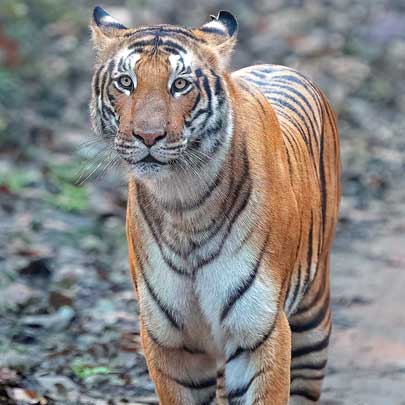The Riverine Landscape Of Katarniaghat: A Unique Ecosystem

Nestled along the banks of the majestic River Ganges in northern India, the Katarniaghat Wildlife Sanctuary boasts a distinctive riverine landscape that stands as a testament to the harmonious coexistence of diverse ecosystems. Let's embark on a journey to unravel the unique features of this landscape and understand why Katarniaghat is a remarkable haven for biodiversity.
1. Ganges River: The Lifeline:
- The sanctuary's riverine landscape is shaped by the mighty Ganges, one of the holiest rivers in India. The Ganges not only serves as a lifeline for the region but also forms the backdrop for a myriad of ecological wonders within Katarniaghat.

2. Rich Biodiversity Along the Banks:
- The fertile banks of the Ganges in Katarniaghat are teeming with diverse flora and fauna. Tall grasses, riverine forests and wetland vegetation create a mosaic of habitats that support a wide range of wildlife, making it a paradise for nature enthusiasts and conservationists.

3. Gangetic Dolphins: Aquatic Guardians:
- The Ganges River is home to the endangered Gangetic dolphins, a species adapted to the riverine ecosystem. Katarniaghat provides a safe haven for these aquatic mammals, offering a rare opportunity for wildlife enthusiasts to witness their graceful presence.

4. Gharials and Crocodiles: Ancient River Residents:
- Katarniaghat is renowned for its conservation efforts focused on gharials and crocodiles. The sanctuary's riverine landscape provides crucial breeding grounds for these ancient reptiles, contributing to the preservation of these species in the wild.

5. Avian Diversity Along the Water:
- The riverine habitats attract a plethora of avian species. From kingfishers and eagles to migratory birds, Katarniaghat becomes a vibrant tapestry of colors and melodies, offering birdwatchers an unparalleled experience.

6. River Islands and Sandbanks: Dynamic Ecosystems:
- The Ganges in Katarniaghat forms dynamic ecosystems with ever-shifting sandbanks and river islands. These areas become breeding grounds for various species and contribute to the ecological balance of the region.

7. Wetland Habitats: Nurturing Biodiversity:
- Wetland habitats, fostered by the riverine landscape, provide crucial breeding and feeding grounds for diverse species of amphibians, insects and waterfowl. These habitats contribute to the overall biodiversity of the sanctuary.
8. Riparian Forests: Green Corridors:
- The riparian forests along the riverbanks create green corridors that connect different habitats. These forests support a variety of mammals, including deer, wild boars and leopards, forming integral parts of the sanctuary's intricate ecosystem.

9. Conservation Challenges and Initiatives:
- Explore the conservation challenges faced by the riverine landscape of Katarniaghat. Highlight ongoing initiatives aimed at preserving this unique ecosystem, including habitat restoration, anti-poaching efforts and community engagement programs.
10. Responsible Tourism: Nurturing the Riverine Ecosystem: - Discuss the importance of responsible tourism in Katarniaghat. Encourage visitors to appreciate the delicate balance of the riverine ecosystem, follow ethical guidelines during safaris and contribute to conservation initiatives that ensure the sanctuary's long-term sustainability.
The riverine landscape of Katarniaghat is a living testament to the intricate dance between water, land and life. Its unique ecosystems along the Ganges River underscore the significance of preserving such environments, not only for the diverse flora and fauna that call it home but also for the communities and generations to come. As we navigate the winding rivers and explore the verdant riverbanks, we find ourselves immersed in a sanctuary that celebrates the beauty of nature's interconnected tapestry.












































































